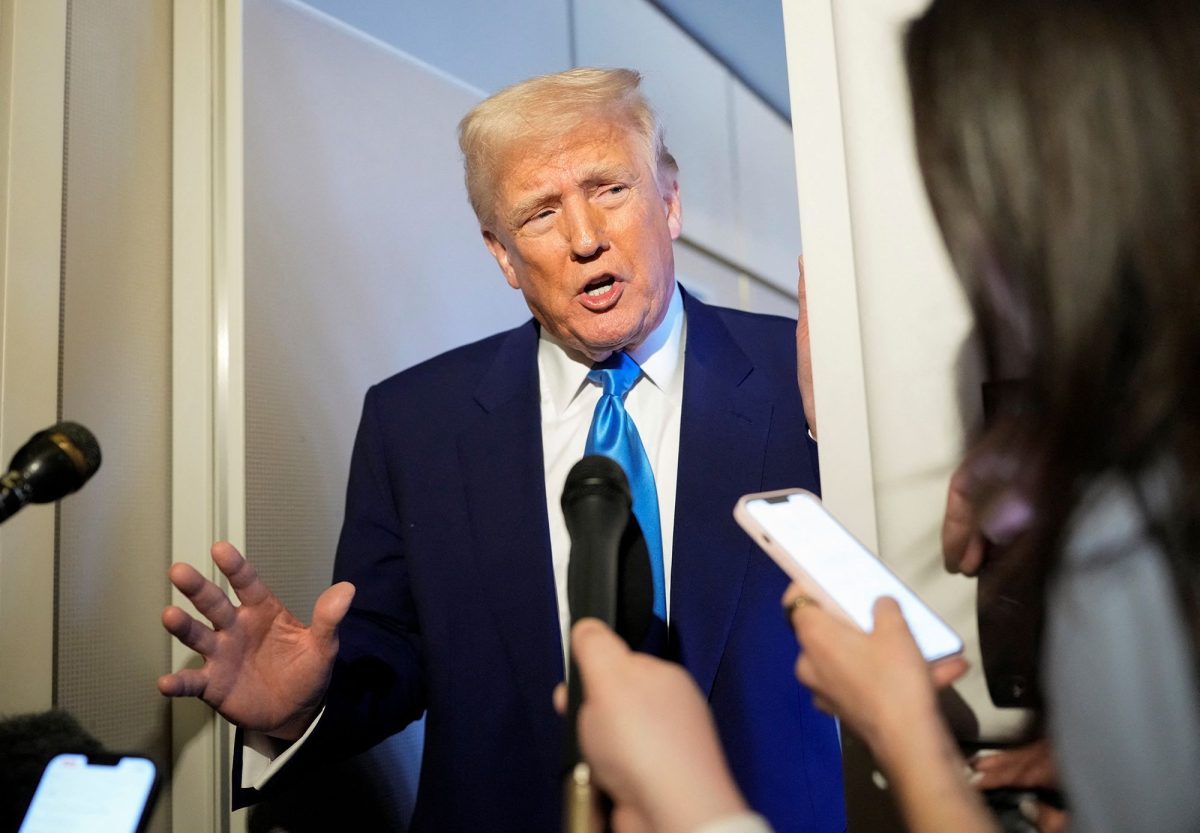Washington (CNN) — Speaking to reporters Sunday on Air Force One, President Donald Trump defended his new global tariffs with a familiar series of false claims about tariffs and trade.
As he has before, Trump wildly exaggerated the US trade deficit with China — describing it as more than three times higher than it actually is. He repeated his frequent false claim that China paid the tariffs he imposed during his first presidency on imported Chinese products; these payments were made by US importers. And he once again falsely described trade with Europe, wrongly saying the continent doesn’t buy “anything” from the US. In reality, the European Union purchased about $649 billion worth of US exports in 2024.
Trump’s Sunday remarks also included inaccurate assertions about other subjects, but we’ll stick to tariffs and trade in this article. Here is a fact check.
The US trade deficit with China
Trump said Sunday that the US has a trade deficit with China of $1 trillion or more.
“We have a tremendous deficit problem with China. They have a surplus of at least a trillion dollars a year. I think it’s like a trillion-one,” he said.
As we’ve noted in previous fact checks, those numbers are not close to accurate. In fact, official federal statistics show the 2024 trade deficit with China in goods and services trade was about $263 billion. Even if you exclude the services trade, at which the US excels, and count only trade in goods, the 2024 deficit with China was about $295 billion.
The US has never approached a $1 trillion trade deficit with China. The deficit in goods trade alone hit a record of about $418 billion under Trump in 2018 before falling back under $400 billion in subsequent years.
Trump’s tariffs on China
Trump repeated his regular assertion that China paid the tariffs he imposed on Chinese imports during his first presidency, wrongly declaring, “I took in, during my four year(s), hundreds of billions of dollars from China.”
In fact, US importers, not foreign exporters like China, make the tariff payments to the US government, and study after study has found that Americans bore the overwhelming majority of the cost of Trump’s first-term tariffs on China. It’s easy to find specific examples of companies that passed along the cost of the tariffs to US consumers.
Trade with Europe
Trump made a series of false claims about trade with Europe, all repeats from previous comments.
He said Sunday: “They don’t take our cars. They don’t take our food products. They don’t take anything. And we take their cars: Mercedes, Volkswagen, BMW. You know, we take their millions of cars. They take no cars. They don’t take our farm product. They don’t take anything. “
None of this is correct.
“They don’t take anything” is far from the truth. While the European Union certainly has some trade barriers that make it harder for US companies to export products there, the official federal statistics show the US exported about $649 billion worth of goods and services to the European Union in 2024.
It’s similarly false that “they don’t take our farm products.” While the EU does have some trade barriers that impede US agricultural exports, the US Department of Agriculture says the EU bought $12.8 billion worth of US agricultural exports in 2024, making it the fourth-largest export market for US agricultural and related products behind Mexico, Canada and China.
And while US automakers have often struggled to succeed in Europe, Trump went too far when he said, “They take no cars.” According to a report last month from the European Automobile Manufacturers’ Association, “164,857 US-made cars were exported to the EU in 2024,” valued at about $8.4 billion at current exchange rates. (Some of these are vehicles made by European automakers at plants in the US.)


